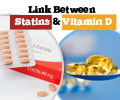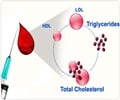- Understanding Blood Cholesterol - (https://med.libretexts.org/Courses/American_Public_University/APUS%3A_An_Introduction_to_Nutrition_(Byerley)/Text/05%3A_Lipids/4.5%3A_Understanding_Blood_Cholesterol)
- Archived Final Recommendation Statement Lipid Disorders in Adults (Cholesterol, Dyslipidemia): Screening - (https://www.uspreventiveservicestaskforce.org/Page/Document/RecommendationStatementFinal/lipid-disorders-in-adults-cholesterol-dyslipidemia-screening#consider)
- Current therapies for lowering lipoprotein(a) - (http://www.jlr.org/content/early/2015/12/04/jlr.R053066.full.pdf)
- Lipoprotein(a) as an Old and New Causal Risk Factor of Atherosclerotic Cardiovascular Disease - (https://www.ncbi.nlm.nih.gov/pmc/articles/PMC6629747/)
Altering Lifestyle if Lipid Profile is Abnormal on Testing
Adopting a healthy lifestyle is the first step in lowering cholesterol levels and reducing cardiovascular disease risk.
Some factors that CANNOT BE CONTROLLED play a role in higher cholesterol levels - like age and gender. Older age groups have a higher cholesterol level and women after menopause have higher cholesterol levels. Hereditary factors, race and family history of cardiovascular disease also play an important role (2Understanding Blood Cholesterol
Go to source).
Factors that can be controlled to lower our cholesterol are by lifestyle changes. These are -
- Diet- plays a major role in influencing the cholesterol levels in our body. Consuming more saturated fatty acids causes increased levels of LDL circulation in the blood. Consumption of sugars and refined starch increase the levels of triglycerides in our blood. Whereas, cholesterol absorption is reduced when our diet is rich in fibre. So we must adopt a diet high in fiber and minimal in saturated fats and sugars.
- Weight- Obesity and being overweight increases risk for heart disease and increases cholesterol levels in blood. By reducing weight we can lower the LDL levels in our blood and thereby reduce the risk of heart disease.
- Reduced physical activity - tends to cause higher cholesterol levels. By regular physical activity we can reduce our weight and therefore also reduce the levels of LDL in blood.

- Smoking- reduces levels of HDL which is the good cholesterol we need. So, cessation of smoking has an important effect on our cholesterol levels
- Hypertension and Diabetes- contributes to an increased risk in developing cardiovascular disease. Keeping these under control through lifestyle changes in combination with medications will benefit an individual’s overall health.
- Stress is associated with increased risk for high blood pressure, Diabetes and cardiovascular disease. Reducing stress will help to tackle these issues and help reduce risk for heart disease (2Understanding Blood Cholesterol
Go to source) (4Archived Final Recommendation Statement Lipid Disorders in Adults (Cholesterol, Dyslipidemia): Screening
Go to source).
If the cholesterol levels does not come down with lifestyle changes or if the person belongs to a high risk category with more number of associated risk factors like smoking, hypertension, family history of early heart disease, older age- there are a number of lipid lowering drugs available like Statins, Fibrates, Bile acid sequestrants, Ezetimibe and Niacin, which can be considered for treatment. They have different actions to help lowering cholesterol. Along with these drugs lifestyle changes are mandatory.
It is important to know that Lipoprotein (a) levels cannot be controlled with lifestyle modifications or routinely used statins. Research shows use of high doses of niacin is useful (6✔ ✔Trusted Source
Current therapies for lowering lipoprotein(a)
Go to source). Other drugs like, PCSK9 inhibitors have shown to be beneficial (7✔ ✔Trusted Source
Lipoprotein(a) as an Old and New Causal Risk Factor of Atherosclerotic Cardiovascular Disease
Go to source). A targeted drug to lower Lp (a) levels is still yet to be found.
Cost of Lipid profile- Ranges and varies from Lab to labs
- General costs - testing at a clinic can cost between $50-$100,
- At home test costs between - $15 to $25
- In India - between Rs.400- Rs. 800








